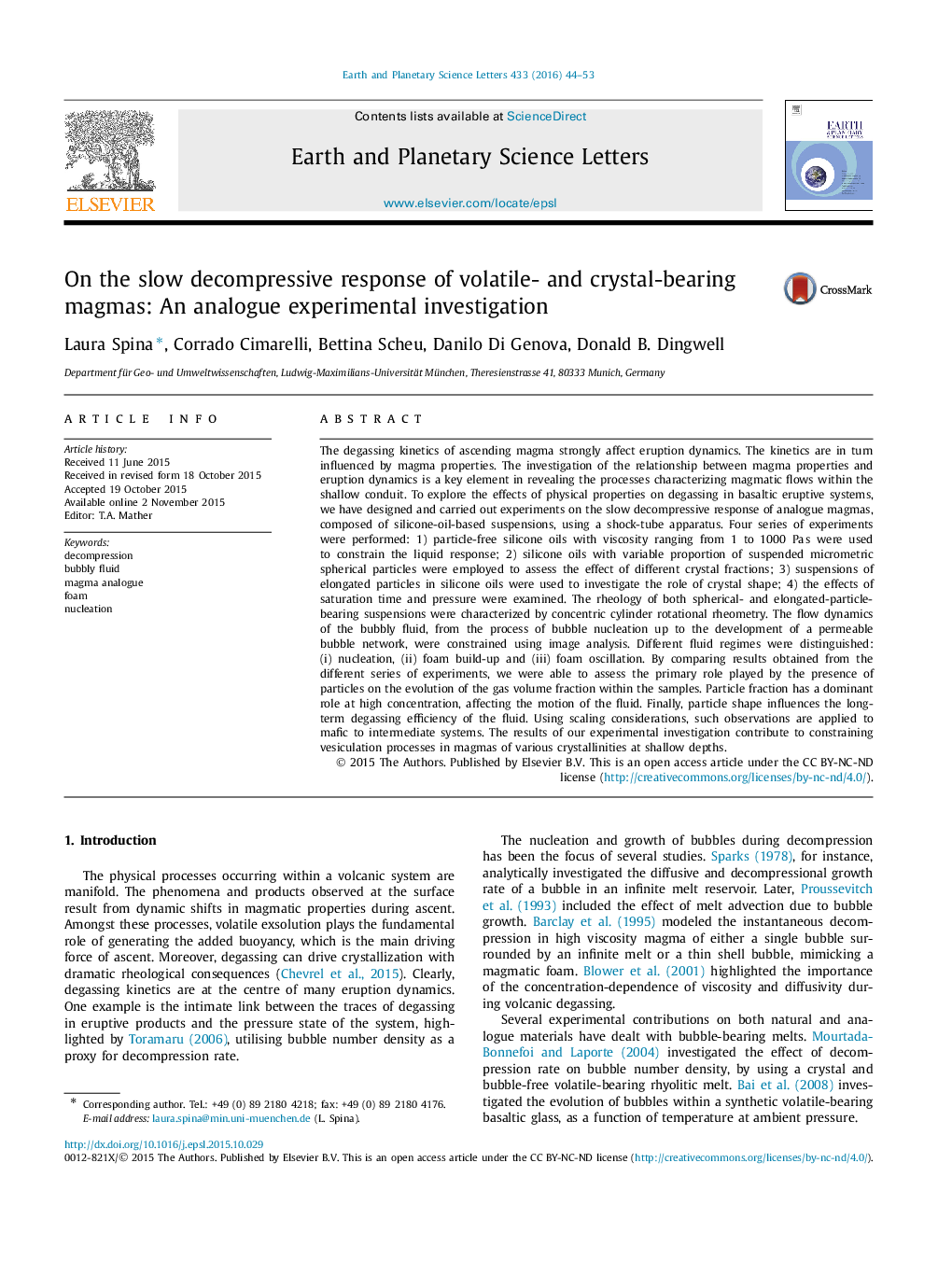| Article ID | Journal | Published Year | Pages | File Type |
|---|---|---|---|---|
| 6427683 | Earth and Planetary Science Letters | 2016 | 10 Pages |
â¢Three degassing regimes recognized: nucleation, foam build-up, foam oscillation.â¢The characteristics of each degassing regime are a function of physical properties.â¢The presence of particles promotes foam-build up.â¢Gas volume fraction depends non-linearly on solid content.â¢Elongated particles enhance degassing efficiency more than spherical.
The degassing kinetics of ascending magma strongly affect eruption dynamics. The kinetics are in turn influenced by magma properties. The investigation of the relationship between magma properties and eruption dynamics is a key element in revealing the processes characterizing magmatic flows within the shallow conduit. To explore the effects of physical properties on degassing in basaltic eruptive systems, we have designed and carried out experiments on the slow decompressive response of analogue magmas, composed of silicone-oil-based suspensions, using a shock-tube apparatus. Four series of experiments were performed: 1) particle-free silicone oils with viscosity ranging from 1 to 1000 Paâs were used to constrain the liquid response; 2) silicone oils with variable proportion of suspended micrometric spherical particles were employed to assess the effect of different crystal fractions; 3) suspensions of elongated particles in silicone oils were used to investigate the role of crystal shape; 4) the effects of saturation time and pressure were examined. The rheology of both spherical- and elongated-particle-bearing suspensions were characterized by concentric cylinder rotational rheometry. The flow dynamics of the bubbly fluid, from the process of bubble nucleation up to the development of a permeable bubble network, were constrained using image analysis. Different fluid regimes were distinguished: (i) nucleation, (ii) foam build-up and (iii) foam oscillation. By comparing results obtained from the different series of experiments, we were able to assess the primary role played by the presence of particles on the evolution of the gas volume fraction within the samples. Particle fraction has a dominant role at high concentration, affecting the motion of the fluid. Finally, particle shape influences the long-term degassing efficiency of the fluid. Using scaling considerations, such observations are applied to mafic to intermediate systems. The results of our experimental investigation contribute to constraining vesiculation processes in magmas of various crystallinities at shallow depths.
